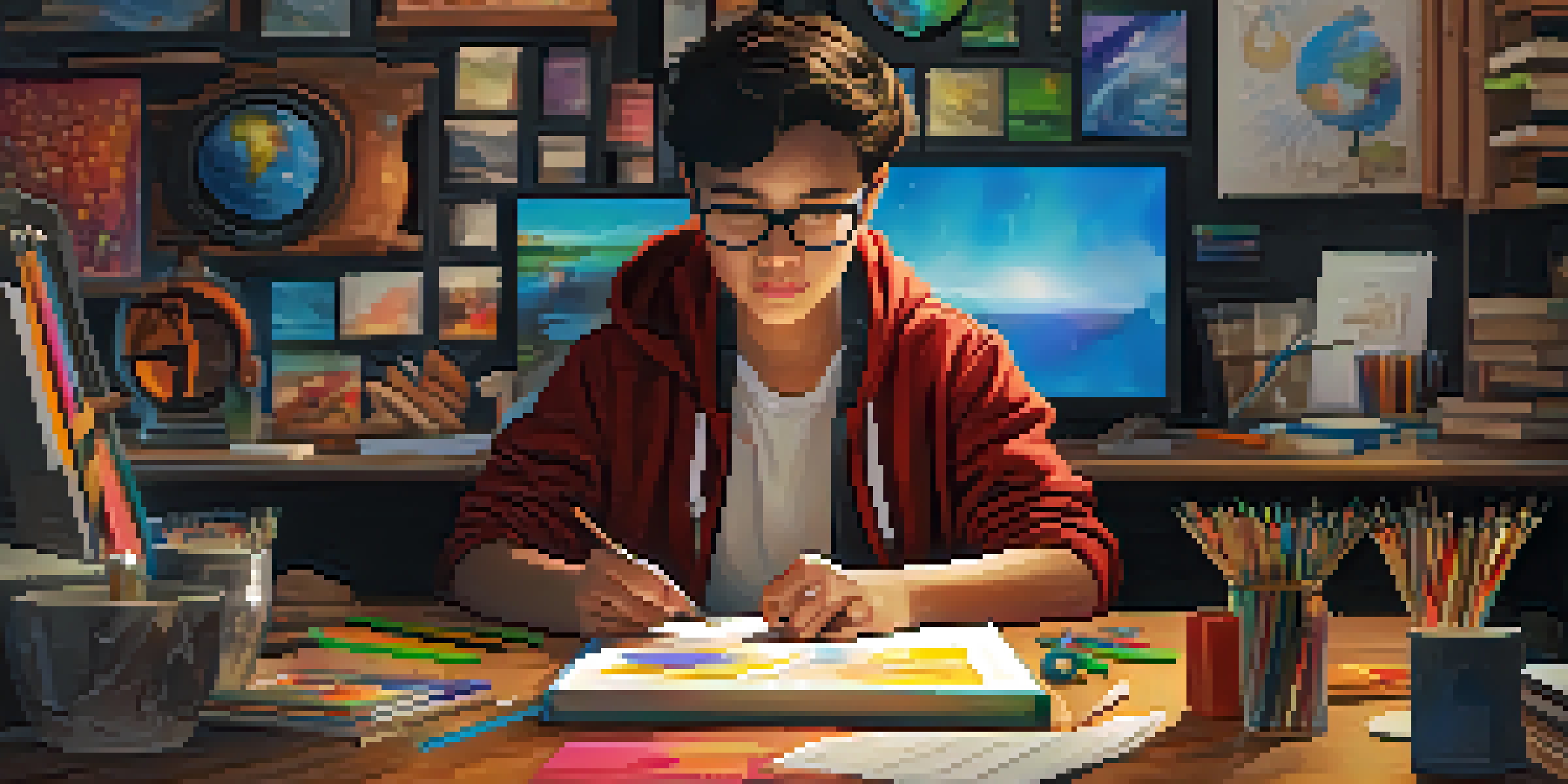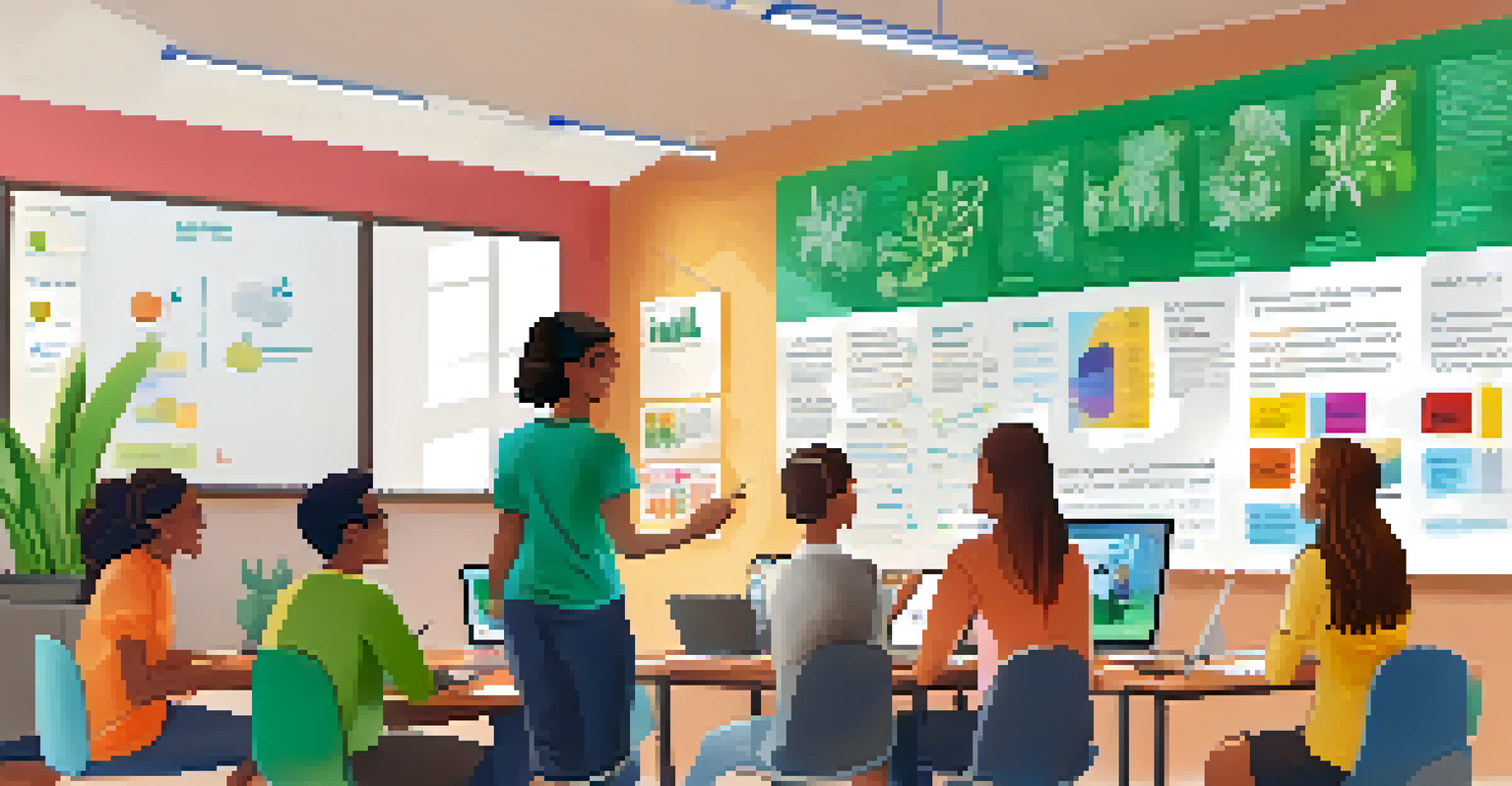Cultivating Self-Directed Learning in Blended Contexts

Understanding Self-Directed Learning in Blended Contexts
Self-directed learning (SDL) is the process where individuals take the initiative in diagnosing their learning needs, formulating goals, identifying resources, and evaluating their progress. In blended learning environments, which combine traditional face-to-face education with online components, SDL becomes particularly vital. This approach empowers learners to take charge of their educational journeys, making learning more relevant and tailored to individual needs.
The greatest sign of success for a teacher is to be able to say, 'The children are now working as if I did not exist.'
For instance, consider a student who is passionate about graphic design. In a blended course, they can choose online modules that focus on digital art tools while also participating in in-person workshops for hands-on experience. This flexibility allows the student to dive deeper into their interests while still meeting curriculum requirements.
The ability to navigate both online and offline resources effectively is key to self-directed learning. This not only enhances engagement but also cultivates a sense of responsibility and ownership in learners, prepping them for lifelong learning beyond formal education.
Key Characteristics of Self-Directed Learners
Self-directed learners typically exhibit a range of characteristics that set them apart from traditional learners. They are curious, motivated, and persistent, often seeking out additional resources to deepen their understanding. This intrinsic motivation is crucial in a blended learning environment, where learners must balance online courses with other commitments.

Take, for example, a professional looking to upskill in project management. Instead of waiting for a course to be offered, they might proactively seek out online certifications and engage in community forums to enhance their knowledge. This proactive approach showcases the essence of self-directed learning.
Empowering Learners through SDL
Self-directed learning (SDL) enables individuals to take charge of their educational journeys, tailoring their experiences to meet personal goals.
Moreover, self-directed learners are adept at self-assessment. They can recognize what they know and what they need to learn, which helps them to set realistic goals and track their progress. This self-awareness fosters a growth mindset, essential for navigating the complexities of blended learning.
Creating a Supportive Learning Environment
To cultivate self-directed learning, it’s essential to create an environment that supports autonomy and encourages exploration. Educators should provide clear guidelines while allowing flexibility in how learners meet their objectives. This balance helps learners feel confident in taking initiative without overwhelming them with too many choices.
Learning is not the product of teaching. Learning is the product of the activity of learners.
For example, a blended learning program might offer a choice between various project topics and methods of presentation. This allows students to engage with materials that resonate with their interests, making the learning experience more meaningful.
Additionally, incorporating collaborative learning opportunities can enhance self-directed learning. When learners work together, they can share insights and resources, helping each other to navigate challenges while building a community of support.
Utilizing Technology to Foster Self-Directed Learning
Technology plays a pivotal role in promoting self-directed learning, especially in blended contexts. Digital tools and platforms can provide access to a wealth of resources, enabling learners to explore topics at their own pace. From online courses to interactive simulations, technology can make learning more engaging and personalized.
Consider a learner using an online platform to study coding. They can choose video tutorials, interactive coding exercises, and forums for peer support, tailoring their learning experience to fit their individual preferences. Such resources not only enhance understanding but also encourage experimentation and creativity.
Key Traits of Self-Directed Learners
Self-directed learners are characterized by curiosity, motivation, and the ability to assess their own learning needs and progress.
Moreover, technology facilitates self-assessment and reflection. With features like quizzes and progress tracking, learners can easily monitor their advancement and adjust their strategies accordingly, fostering a sense of accountability in their learning journey.
Strategies to Promote Autonomy in Learners
Promoting autonomy in learners is crucial for fostering self-directed learning. One effective strategy is to encourage goal-setting, where learners define their own learning objectives and timelines. This not only gives them a sense of direction but also reinforces their commitment to the learning process.
For instance, a blended course could incorporate a module where students outline their personal learning goals and check in on their progress throughout the semester. This accountability can motivate learners to take charge of their education and remain engaged.
Additionally, providing opportunities for choice in assignments can enhance autonomy. Whether selecting a project format or topic, these choices empower learners to align their work with their interests and strengths, making learning more relevant and enjoyable.
Encouraging Self-Reflection and Evaluation
Self-reflection is a crucial component of self-directed learning, allowing learners to evaluate their progress and identify areas for improvement. Incorporating reflective practices into blended learning can help learners develop critical thinking skills and gain insights into their learning processes. Journals, peer reviews, and self-assessment checklists are great tools to facilitate this.
For example, after completing a project, students might be asked to reflect on what they learned, what challenges they faced, and how they overcame them. This not only reinforces learning but also fosters a sense of achievement and resilience.
Role of Educators in SDL
Educators facilitate self-directed learning by providing guidance and fostering an environment of trust that empowers learners to take initiative.
Moreover, regular reflection can help learners adjust their strategies and goals, making them more adaptable in the face of challenges. This ongoing cycle of evaluation and adjustment is fundamental to cultivating a growth mindset.
The Role of Educators in Supporting Self-Directed Learning
Educators play a vital role in fostering self-directed learning by providing guidance and support without dictating every step of the learning process. They can act as facilitators, helping learners navigate resources and develop skills needed for independent study. This approach encourages learners to take ownership of their learning while still benefiting from expert insights.
For instance, an educator might host regular check-ins to discuss learners' progress and provide feedback, while also encouraging them to seek out additional resources. This balances support and independence, paving the way for self-directed exploration.

Additionally, creating a culture of trust and respect within the classroom can empower learners to voice their thoughts and ideas. When learners feel valued, they are more likely to engage actively with their education and take initiative in their learning.